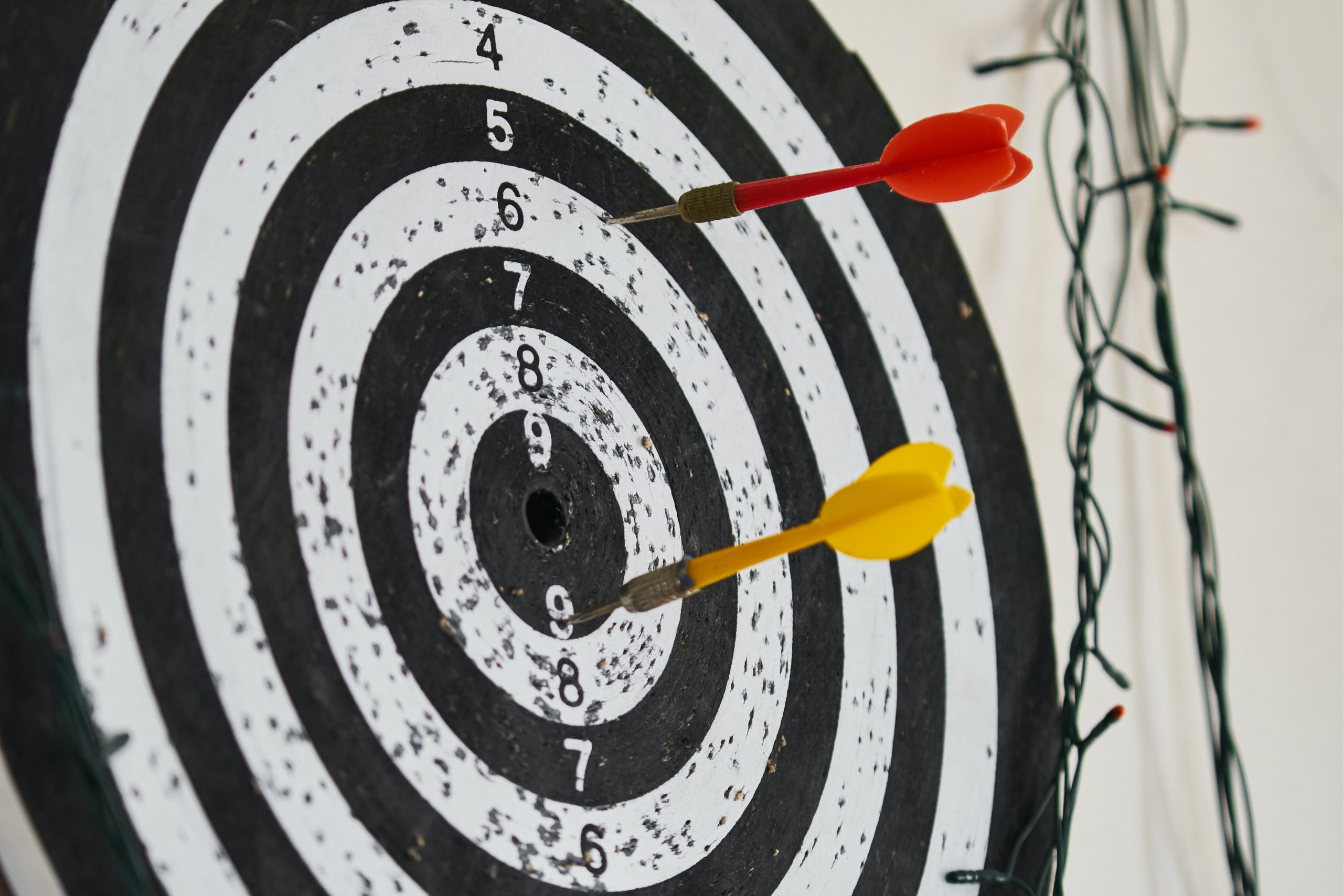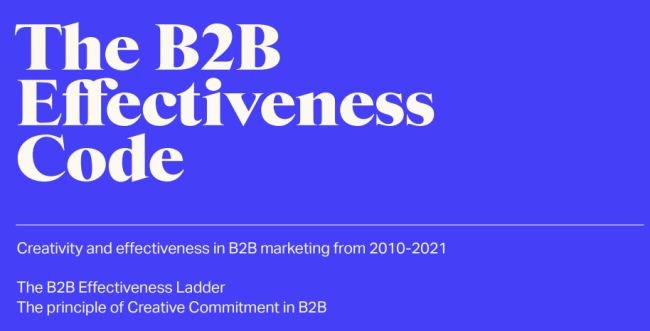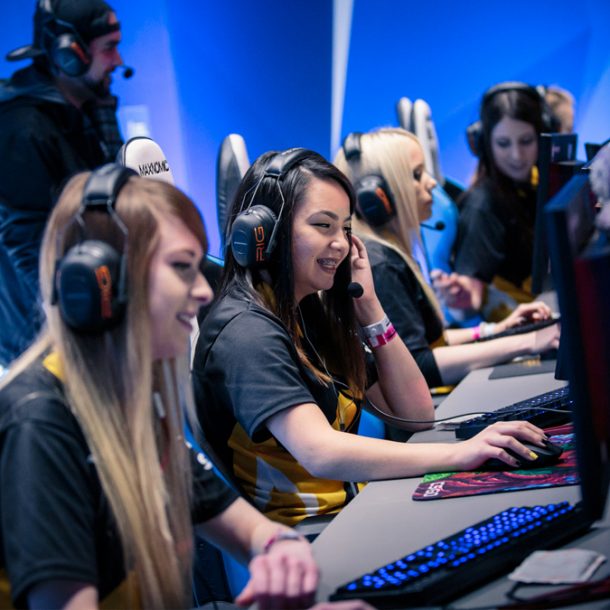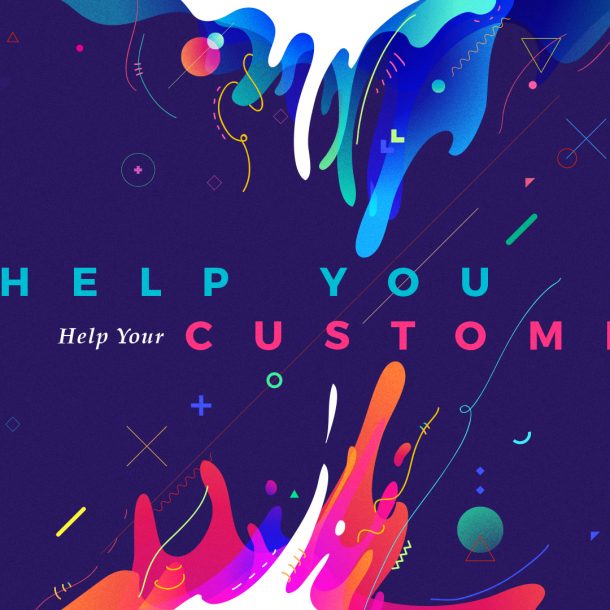LinkedIn’s new think tank, The B2B Institute, published a large study to analyse the creativity and effectiveness of B2B marketing campaigns during the period between 2010 and 2021.
“The B2B Effectiveness Code” is a white paper to help B2B brands create more effective marketing by better understanding the types of effects their advertising generates, and the types of creativity that best lead to those effects.
Linkedin partnered with Lions and WARC who previously worked on another study. The new paper affirms some tenets uncovered by the previous study hold true in B2B marketing and introduces a new concept — the B2B Effectiveness Ladder.
The key findings are as follows:
a. In order for B2B brands to grow, they require a better balance of short-term sales activation and long-term brand building, more focus on large audiences who aren’t necessarily ‘in the market’ today, and more use of emotion to connect deeply and powerfully with B2B purchasers.
b. Instead, B2B marketing currently focuses on short-term, rational, and strictly targeted campaigns that seek to drive immediate sales effects. The use of long-term campaigning, broad targeting, and emotional creative work are largely absent from B2B marketing.
c. Just as in B2C, B2B campaigns become more effective when they have higher spending, are run for longer durations, and are spread out across more media (the principle of Creative Commitment).
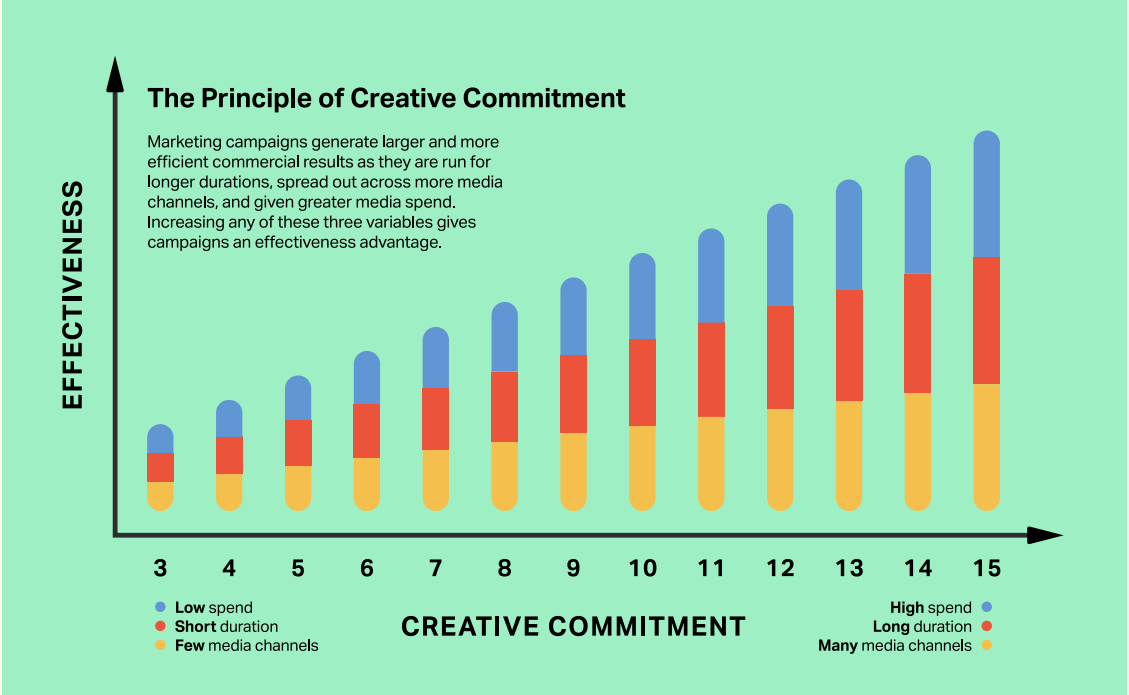
d. Creative Commitment in B2B is falling. The B2B marketing community is reducing spending, duration, and number of media channels used for their campaigns. This will lead to lesser effectiveness of B2B marketing and will result in a decrease in both campaign effectiveness, and the overall value of B2B marketing.
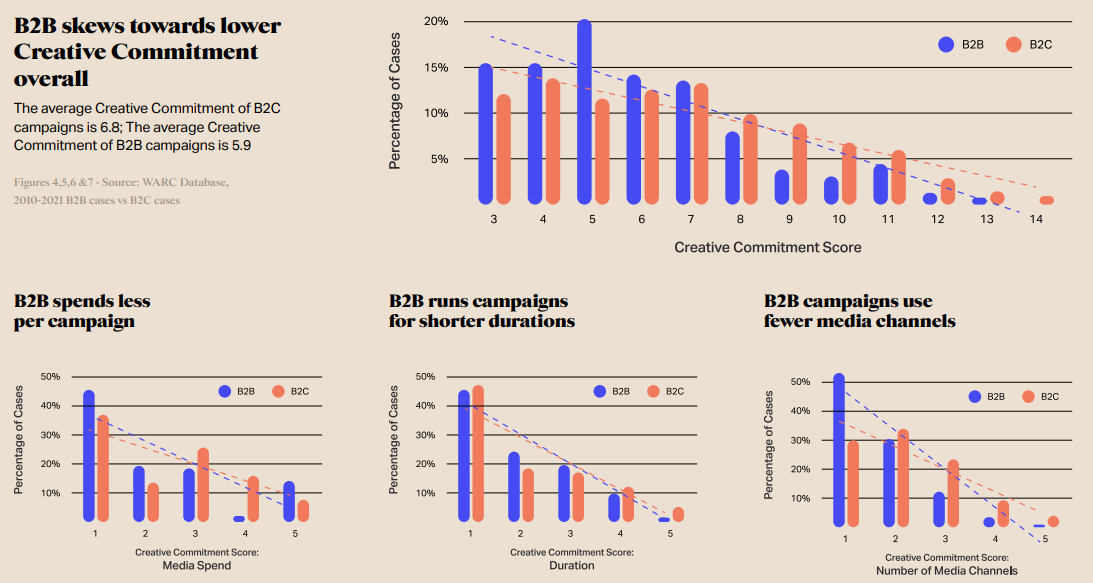
e. The B2B Effectiveness Ladder is a hierarchy of the six main types of effects that B2B marketing produces, from least to most commercially impactful:
-
- Response Trigger: stimulate a response or interaction.
- Lead Generator: generate qualified sales leads.
- Sale Closer: convert existing demand to sales.
- Fame Maker: create awareness and talkability.
- Brand Builder: create greater affinity with the brand.
- Strategic Asset: drive the business forward into the future.
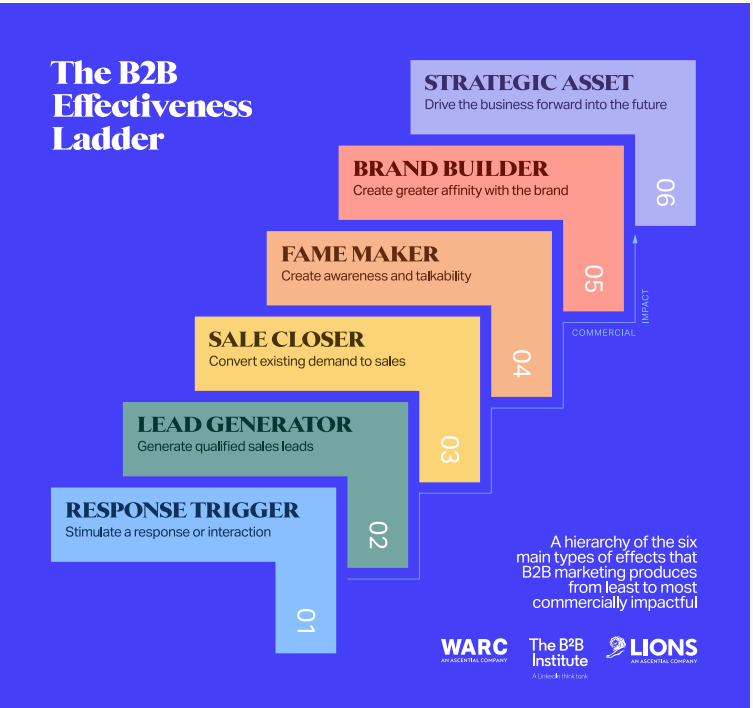
f. The B2B Effectiveness Ladder has been designed to enable the B2B marketing industry to more easily identify and learn from effectiveness best practices, so that they can more consistently produce highly effective creative campaigns and initiatives. It is a tool to be used for continuous improvement by B2B marketers and their agencies.
g. There are some common ‘winning behaviours’ of creative campaigns at each level of the Ladder. For example, the best practices for Level 1 (Response Trigger) are: #1 Don’t be a boring business, #2 Demonstrate product benefits in surprising ways, and #3 Catch people off-guard.






